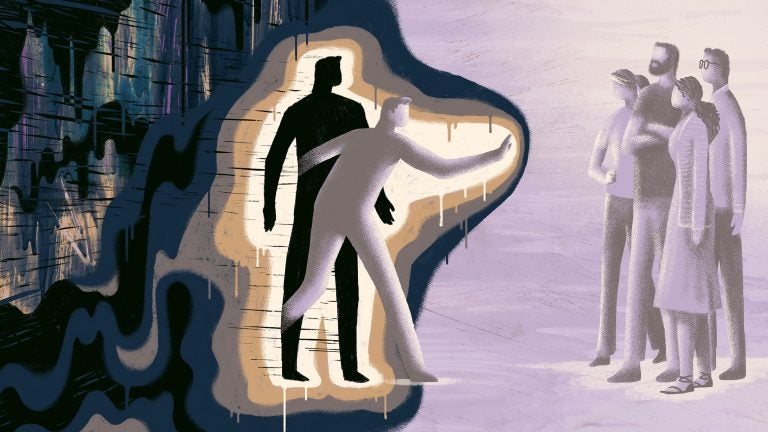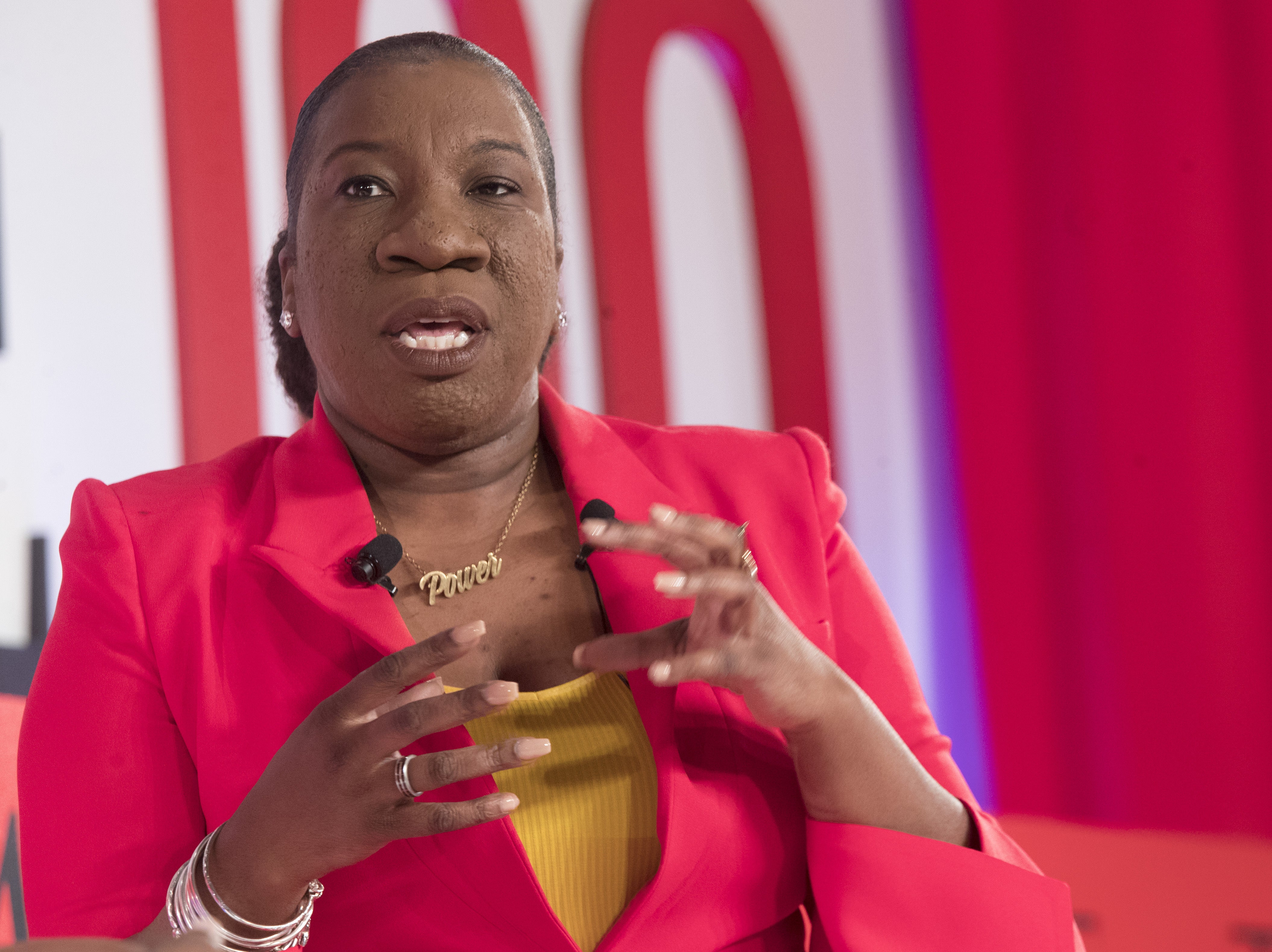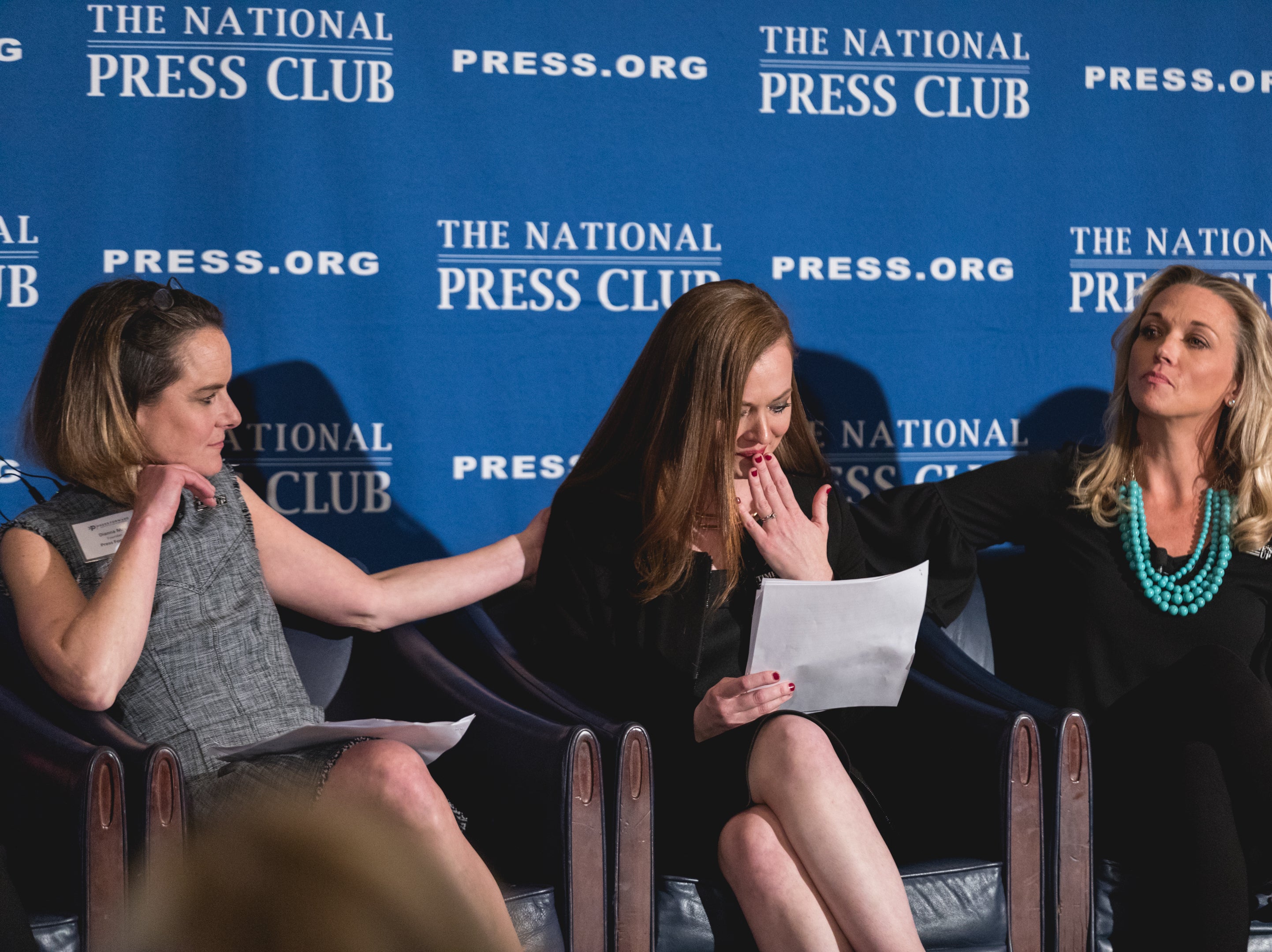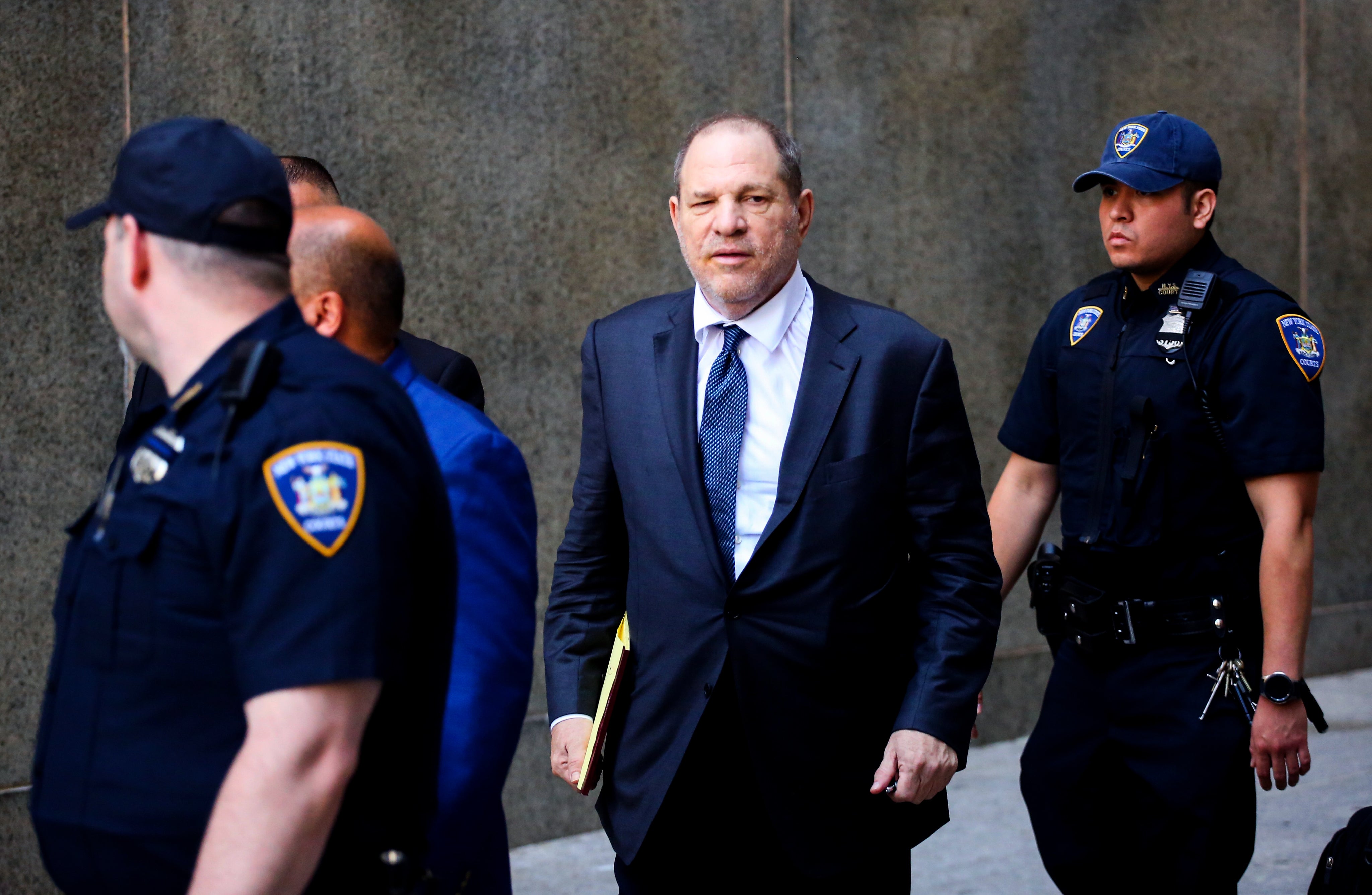Is redemption possible in the aftermath of #MeToo?

It has been two years since the start of the #MeToo movement, with many powerful men accused of sexual misconduct. Some are now attempting comebacks, raising questions about rehabilitation, redemption and reentry. (Matt Chinworth for NPR)
Updated at 11:35 a.m. ET Sunday
It’s been two years since the #MeToo movement erupted, toppling many powerful men accused of sexual misconduct.
Some guys who were ousted for alleged sexual misconduct started talking about their comebacks practically nanoseconds after they were accused. But the pace of those actually doing it seems to be picking up, with comedian Louis C.K. returning to headline comedy shows, former U.S. Sen. Al Franken launching a new podcast and a radio show, and onetime TV political pundit Mark Halperin offering commentary on radio and publishing a new book. Their alleged offenses run the gamut, as do their expressions of remorse, fueling questions about what a road back should look like and who should travel it and when.
“We have to grapple with this question of who can come back and who can’t,” says Tarana Burke, the activist who coined the term “Me Too” years before it went viral in 2017. She says her focus remains on supporting survivors, and she doesn’t much like being asked so often these days about perpetrators’ comebacks. But, she concedes, society must also focus more on rehabilitation, not so much for the perpetrators’ sake, as for the sake of real, lasting change.
“We can’t move to a culture that eliminates sexual violence if we’re not dealing with how harm-doers become harm-doers and how they undo that,” she says. “Leaving them in a heap on the side of the road is not the answer; allowing them to sneak back in through the back door […] and acting like nothing happened [is not] the answer. There should be an expectation that there’s real rehabilitation and that [offenders] have seen the light and want to make dramatic shifts in their behavior.”
Indeed, some are suggesting that the road forward for the movement depends on a road back for the offenders. Joan Tabachnick, an expert on sexual assault prevention, says enabling women to say “me too” is a critical first step, but in order to be sustainable, she says, the #MeToo movement needs “to also go beyond that, to create opportunities for someone to say, ‘Yes, I did this.’ ” It’s not about “letting them off the hook,” Tabachnick says. It’s about “creating the space for people to take responsibility for what they’ve done and to figure out what they need to do differently.”
Halperin is one who has tried. About a year and a half after he was fired amid multiple allegations of aggressive sexual propositioning, forcible contact and lewd behavior, and a few months before he announced his new book, he reemerged on The Michael Smerconish Program on SiriusXM, reiterating his apology “to the women that I mistreated and who were hurt by me.” He described his volunteer work helping ex-inmates reintegrate into society and his “hundreds” of conversation with women “to really understand why [sexual harassment is] so painful.”
“I know I need to continue to grow. I wasn’t a perfect person when I made these mistakes. I’m not a perfect person now, I’m happy to be judged by perfect people,” he said. “But I want to be someone who can work.”

Contrition, however, is in the eye of the beholder. And some don’t see it.
“It feels like he is just checking boxes and that all he seems to care about is reestablishing his career,” says Dianna May, one of Halperin’s accusers.
Halperin declined to comment for this report. In the past, he has admitted to the bulk of the allegations, including “outrageous,” “aggressive and crude” misconduct, but has denied some of the worst of it, including physical assaults and threats.
To May, he failed the first critical steps on the road to redemption, which is fully owning what he did and making a direct, personal, specific and sincere apology to all those he harmed. It’s not that she’s opposed to the idea of redemption, May says, she actually forgave another man for sexual misconduct after he owned it and apologized sincerely.
“I’m not just continuing to kick the guy in the teeth because I’m a mean, vengeful person,” she says. “It’s hard work to be forgiven and [Halperin] is not there.”
But others, like his publisher Judith Regan, president of Regan Arts, argue that Halperin’s apology, and the price he has paid, should be enough.
“He was humiliated. He lost all his jobs,” Regan says. “I think that we cannot as a society just take all of these men, condemn them to a life of unemployment and perpetual shame … Maybe we don’t put them in positions of authority over women, I can understand that, but in the case of Mark Halperin, writing a book in his apartment, I don’t see what harm there is.”

So, how do we decide who gets to come back? And under what conditions? When it’s criminal, we have judges and sentencing guidelines. Is it possible, outside the legal system, to come up with some way to measure the egregiousness of the offense, the sincerity of the apology, the risk and all the intangibles to determine who has earned a second chance?
“I wouldn’t be waiting for that,” says New York University ethicist Arthur Caplan. “There’s no snap algorithm or formula. The ethics here are pretty complex.”
Attorney Ari Wilkenfeld agrees.
“It’s going to be subjective,” says Wilkenfeld, “but I really do feel we’re going to know it when we see it.”
Wilkenfeld has been representing harassment victims for 20 years, including one whose allegations brought down former Today Show co-host Matt Lauer. Working with activists from Press Forward, a nonprofit aimed at eradicating sexual harassment in newsrooms, Wilkenfeld has been trying to conceive some kind of road map for the road back. Or at least a rough guide. A sincere apology is just a first step, he says; offenders also need to engage in a process of restitution, so those who were part of the problem can become part of the solution.
“We’re two years out now. It’s very disappointing because as much as we need to get people out of the workplace who are dangerous, we should also be looking to get people back into the workplace who have learned their lesson and are willing to teach it to others,” Wilkenfeld says. “That’s more valuable than expelling somebody for life.”
To many others, however, the very suggestion of redemption is both premature and misguided.
Leigh Gilmore, distinguished visiting professor of women’s and gender studies at Wellesley College, says people should be more worried about helping victims recover what they lost.
“How do you come back from having your mentor destroy your career? How to you come back from having your boss ask for sexual favors?” she asks. “Those are the questions I think we should be taking up, not how guys get to come back and have the next stage of their careers.”
“I don’t even know where to begin with the trauma it brings up for me and many other people,” says model and actress Zoë Brock, one of the many who accused former film producer Harvey Weinstein of sexual misconduct.

She worries about sending the message that “guys can just take a short timeout and then come back to the table.” That, she says, could have a chilling effect on reporting and could erode the progress made by #MeToo.
“I think we’re in a massive amount of danger of having all this stuff continue,” she says. “I beg anyone listening out there: Don’t ever be complacent about it.”
But even some of staunchest survivor advocates insist that a road back for offenders is not at odds with what most victims want.
“Survivors are rarely seeking vengeance … or the utter destruction of the life of the person who harmed them,” says Kaethe Morris Hoffer, executive director of the Chicago Alliance Against Sexual Exploitation.
“Overwhelmingly,” she says, what they want is “accountability for the pain they caused and a commitment to changing so they don’t harm others.”
Such a path may not be possible for serial predators. But most sexual harassers are at the other end of the spectrum and can be rehabilitated, according to a burgeoning industry of consultants, coaches, counselors and therapists now being called in to work with them.
“The people that I work with are people who are crossing lines and not handling the power they have appropriately,” says Amy Oppenheimer, an employment lawyer in Berkeley, Calif., who also does coaching. “But they can be turned around.”
Oppenheimer recalls one particularly arrogant executive she worked with who showed up angry that he even had to be subjected to training sessions. He started going on a rant, demeaning and insulting her at their first session and only stopped when she started letting him know how much his behavior made employees dislike working for him.
“He started to cry,” she recalls. “And obviously, some of these habits are really hard to change. But the fact is, there is something there I can work with.”
Ultimately, it’s up to employers to monitor their employees and make sure that his behavior has really turned around and that the workplace is safe for everyone. But that’s where the roadblock tends to be.
“Employers are not quite prepared for how much work it takes to actually integrate someone safely, responsibly and with sensitivity and care,” says Shira Berkovits, founder of Sacred Spaces, an organization that consults religious institutions on how to prevent and respond to sexual misconduct.
“Right now it’s very in vogue to say that we want to give people a second chance,” Berkovits says. “But it’s not for human beings to determine when and if somebody’s repentance is sincere,” she says. “That’s between a person and God.”
An employer’s priority must be on “standing up for the victim,” she says, “to create a space of safety for that person.”
But when they realize how much work is involved, Berkovits says, employers often balk, including even those religious institutions that hold redemption as a core value. Her team usually spends months meeting with all parties, including therapists who’ve assessed an offender’s risk, and writing up an extensive plan for reintegration. And often, she says, when the clients read it, “They say, ‘We don’t have the capacity to deal with this,’ or ‘Well, we thought we wanted to do this but […] never mind. It’s too hard.’ ”
Dan Guliano spent several decades heading large corporate human resources departments before becoming a director at Associated Industries of Massachusetts, where he does consulting and training. He says the philosophical questions of who deserves redemption usually take a back seat to companies’ more pragmatic concerns about their liability and reputation.
“The employer doesn’t have lot of leeway here. You can’t say to rest of workforce: ‘Give the guy a chance.’ It just doesn’t work. ‘I’m going to let that person go,’ ” he says. “Is it the right thing? The moral thing? The ethical thing? That’s a whole ‘nother ball of wax.”
Even as a practical thing, Guliano says with a sigh, it’s problematic, since those who are let go, obviously, don’t just disappear. They’re still among us — mostly not famous — and likely to land in a cubicle across town, next to someone else who has no idea.
Berkovits has seen it happen. One client recently called her to say it had kicked an offender out of the community. “I said, ‘Where did he go?’ ” Berkovits recalls. “And they said, ‘Don’t worry, he went’ ” to a nearby town.
9(MDAzMzI1ODY3MDEyMzkzOTE3NjIxNDg3MQ001))




